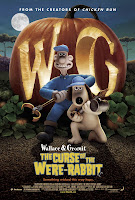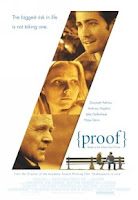Prejudice and pride.
I must have watched Pride and Prejudice at least 10 times now, and there are a few things that always happen to me when I watch it:
I always laugh at some parts, like, for instance, when Mr. Collins, the ridiculous cousin of the Bennet sisters comes to visit them and he tells
At this party, all the women are wearing white, and I haven’t found a well-documented explanation for that. The logical reason for it to appear in the story itself might be that it’s a theme party, or one of those requisites that they put in invitations to snob parties or weddings nowadays.  A more profound reading for me would be that at this party
A more profound reading for me would be that at this party
The scene where Mr. Darcy and Elizabeth are dancing alone is a technical challenge, I must say. At first I thought it must have been done with tracking rails, which would allow the camera to go around the couple as they dance. But then I thought that it wouldn’t be possible to do that back and forth movement that the camera does toward the characters, as it was also dancing with them. So my final guess is that it has been filmed with a steady-cam. This doesn’t make things easier. A steady-cam is a very heavy artefact, and to “dance” with it must have required a lot of rehearsing for the camera man (or woman, I just think that it has most probably been a man, because of the physical strength that managing a machine as a steady-cam involves). This way of developing this scene makes me feel closer to the characters, and it also gives me the impression that they are a bit lost in their feelings for each other, like the camera when it goes closer and farther, closer and farther.
Using the angles or the movements of the camera to indicate what the characters feel has always been used. In the scene where Elizabeth and Wickham have just met, and they are talking by they river, the angles indicate us the hierarchy of the characters. Not in society, but in that moment, Wickham is superior to Lizzie. She is sitting down, and he is standing up, randomly looking at her and playing with the tree’s leaves. He’s telling her his relationship with Darcy (which we will learn later that is completely different as he portrays it), and the camera shows him from a low angle, making him look bigger and powerful, handsome. He controls the situation. He’s fooling Lizzie. The clever part here was to have Lizzie sit down during this conversation, in order to be able to have the low angle in which Wickham is portrayed also be a point of Lizzie’s view shot.
In the last viewing I did of this film, I realized that there is a turning point in the movie, almost in the middle. This is, obviously, when Mr. Bingley leaves Netherfield. It’s almost as restarting a computer. The sisters are where they started: with no prospects of matrimony, only this time Jane is broken hearted and has a specific way of trying to solve her problem.
Going back to the things that always happen to me when I watch this movie, I will address the earlier party in Meriton, the one where Mr. Darcy, Mr Bingley and his sister are introduced. In this party, Mr. Darcy is all but a sympathetic character. He hurts Lizzie’s feelings, but then she gets back at him. I feel empathy for 
When the group makes its entrance in the hall and everyone stops dancing, the camera looks for
One of the most intriguing scenes is the visit of Lady Catherine de Bourg. This is the critical scene where Elizabeth Bennet suffers a crisis, provoked by the questions of Lady Catherine. She is asked to swear she won’t accept a matrimony offer from Mr. Darcy, and she has to decide yes or no right there, on the spot. Interestingly, the scene begins almost as a theatre scene would begin. Dim-lighted, just enough to see the two main character’s faces and bodies, we can see both of them facing each other in an establishing shot. Later, we move back and forth from close ups of
From here we go directly to the scene where Darcy and Lizzie come together, which I will discuss later. What I want to say about this scene now is that this is actually the end of the story. What follows in completely unnecessary: when Darcy and Lizzie ask Lizzie’s father for permission. We already know that they are together, but this part of the film helps ask wrap up with the beginning. It has the same tone: the opening and the closing scene of a movie often give us the gender of the movie, in this case a romantic movie set in the 1700’s in a beautiful countryside background.
This sensation of being a spectator of the main story is portrayed in the movie in different occasions. At the opening sequence, we follow Lizzie as she goes to her house. When we get there, the camera, that is, us, wonders around the interior of the house and encounters
This leads me to a part of the movie that I think is indispensable: the music. Dario Marianelli did a great job creating the soundtrack, and most of all alternating the moments when that music was diegetic or non-diegetic. That helps us feel that the music is as part of the story as the character, actually as if it was one more character, that leads us smoothly through the changes of scenes.
There is yet another character that is not directly implied by the natural development of the story: the sun. This was a choice of the director, but exactly what his motivation was I can not say. I can guess, though.

But apart from these hypothetical meanings of the sunlight, the main point is that it is extremely beautiful in the screen. The most breathtaking part for me is the scene where they reunite in the very morning, at dawn. The rising of the sun in this scene is like a metaphor of he rising of their love. And of course, the script helps a great deal to make this scene one of the best love scenes I have ever watched.

Mr Darcy: “I will have to tell you. You have bewitched me body and soul, and I love, I love, I love you. And I never wish to be parted from you from this day on.”
She smiles, comes closer to him, takes his hands in hers.
She kisses his hands. The sun is slowly rising in the horizon. They put their heads together, and the sun shines between their eyes, closed, and their mouths, that we never see meet. We have seen enough.























